Polar M600 Review
This Polar M600 Review is a detailed look at the Best Running Watch for AndroidWear.
 This product marks an exciting new direction for Polar. Indeed it probably marks the start of another significant turning point in the market for sports and fitness devices.
This product marks an exciting new direction for Polar. Indeed it probably marks the start of another significant turning point in the market for sports and fitness devices.
I’m only going to look right now at the M600 with an Android smartphone as the integration on the iOS sidewas INITIALLY limited, improvements on the iOS side were rolled out in Q2.2017 but are not discussed in detail.
This review WILL be updated over time with more use of the product.
Introduction
So what exactly should I review in this Polar M600 review? 🙂
- The M600 runs AndroidWear 2 by Google. That’s the watch version of the Android OS on your smartphone. So I presume you don’t want me to review a 3rd party operating system?
- The Polar app is a relatively small app. That won’t take long. It’s VERY similar in looks and functionality to the AndroidWear apps for STRAVA, GHOSTRUNNER, ENDOMONDO, etc. They’re mostly almost all the same to glance at. Well, different colours. Actually Polar’s is better because of how its screens are configurable by the Flow web service. Even then, the Polar app is just a lot of screens that are QUITE similar to those you find on earlier Polar devices.
- So we’ll come back to review the hardware then? Just a list of technical specifications and maybe how nice it looks. So then that will just be oHR accuracy, GPS accuracy and whether or not it has a lap button (it does). Nope. That sounds a bit boring.
Hmmm.
I’ll persevere. But this is going to be different to regular reviews as I will need to cover all those 3 areas but that won’t be possible in-depth as the scope would be too wide so I will try to cover the key areas as they relate to a sports and fitness device with some digressions to cover some of the many interesting aspects of AndroidWear.
If you have an Apple Watch then it’s probably conceptually similar to that. But if you had an Apple Watch then you probably won’t be reading this 🙂 So that comparison doesn’t help!
Hardware – Design
I like it. It looks very nice. I’d wear it most of the time even outside of the Polar M600 review process itself.
The colour touchscreen screen is bright, vibrant and generally responsive. Indeed on the face of it, the M600 has the high res colour & looks that I always wanted from an improved V800 triathlon watch.
The size of the screen is fine in the sense that it is the same size as the V800’s screen so it IS OK for in-sport usage with the Polar app. However the AndroidWear text (outside of the Polar app) comes out on the small side even with normal-size text. There is no large-size text option only a small-size text which even an ant would have difficulty reading.
The whole package is aesthetically very like an improved high-end V800 triathlon watch.
It’s pretty.
The M600 has two buttons. The button on the left-hand side is barely visible and brings up the AndroidWear bits. The main, visible button under the screen is the Polar app button and lap button for the Polar app. Other apps initiate a lap with a screen tap, Polar uses the button. Does it matter either way? No, unless you have a sensitive screen…
It’s comfortable.
The strap is soft and more comfortable than some previous Polar models and that’s probably a good thing. The entire strap can be removed in one piece and replaced with another of the same or different colour. This is an improvement on the V800 where the strap was in 3 pieces, all of which would require an expensive changeover if you wished to change the entire strap’s colour.
On the rear is a rather impressive oHR unit with 6x LEDs and a central receiving sensor.
The charging port is nor covered and looks like the one on the V800 but without the ridiculous flap that always gets in the way. Rather than the V800’s clip-on charger, the M600 fastens with a magnet. The charger will only attach in one precise position, it does come off fairly easily and is a bit of a faff. But OK, I guess.

 How The Polar App Works
How The Polar App Works
First I’ll quickly explain how you get going with your workout. It’s simple:
- Out-of-the-box, you can simply select your sport and off you go.
- Alternatively you can configure the screens for your sport on the Polar web service. And off you go with a custom running experience.
- You can create and schedule a complex workout on the Polar web service. The app later prompts you to start the workout at the scheduled time. And off you go.
Navigating the device requires the use of the ‘top’ button which, when pressed, starts the Polar app. The touchscreen must then be used to navigate and select the ensuing menu options starting with the two main sections of the Polar App which are: Training & My Day.
‘Training’ takes you into any of your chosen individual sports and the numerous workout screens for that sport including default screens, lap screen, your own custom screens and post-workout summary screens. Despite the visual simplicity, the app is a powerful training aid.
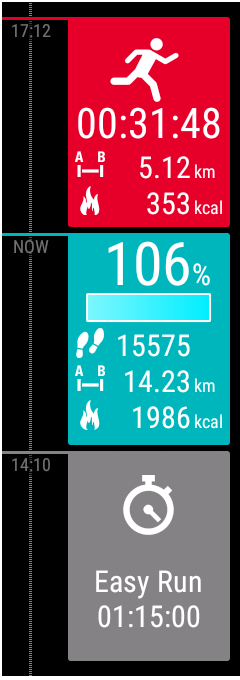 ‘My Day’ shows you more detail of your sporting and activity status today, notably the following:
‘My Day’ shows you more detail of your sporting and activity status today, notably the following:
- FUTURE (grey) details of your scheduled training for today;
- CURRENT progress with today’s steps, calories and distance; and
- EARLIER (red) details of todays’ completed workout with the workout summary.
To view detailed historical stats, you will find the Polar Android app on your smartphone to be a very powerful and practical tool for most people. The web service offers even more capabilities. Both are free and great.
I’ll look at two things you can do with the M600 and Polar Flow, which should give you a good feel for the sporty capabilities of the M600. I’m going to give an example based on the running ‘sport profile’ but the same would apply to the many other sport profiles. Polar has LOTS of pre-configured sports profiles. Here’s what I’ll go through:
- Creating and physically completing a custom interval running workout; and
- Customising the screen in the running profile.
Create & Follow A Workout (eg Interval Running)
The workout is created in the Polar Flow web service by adding a training target for the day. On the slideshow, below, is a relatively straightforward example of an interval workout with 2 minute repeats followed by 2 minutes of recovery. When this is saved on the web service it is automatically synchronised to your app and then to your watch. The M600 does indeed have wifi capabilities and connects to wifi BUT the Polar app synchronisation on v1.3 goes via the smartphone.
The slideshow also shows: the prompt to start a scheduled workout on the M600; the acquisition of HR and GPS signals on the M600; and two of the workout screens from the warm-up and ‘work’ part of the workout.
![]() At the end of the workout you press and hold the lap/top button for 3 seconds. Then you get a nice summary over several screens as shown on the small image to the right – it’s worth a closer lookas it illustrates the quality of the metrics on the screen. It shows all the usual post-workout information but in a pretty format, especially the colourful bar chart showing time-in-zone.
At the end of the workout you press and hold the lap/top button for 3 seconds. Then you get a nice summary over several screens as shown on the small image to the right – it’s worth a closer lookas it illustrates the quality of the metrics on the screen. It shows all the usual post-workout information but in a pretty format, especially the colourful bar chart showing time-in-zone.
The completed workout is then incorporated into your daily/weekly/monthly activity summaries on the smartphone as shown below. For a much more detailed post-workout analysis, you would look at the Polar Flow web service (not shown). If you were feeling particularly brave you could link the Polar Web service to many other online platforms – you could even get your data into Garmin Connect via STRAVA if you were so-inclined.

If you are interested in analysing your workouts some more but are new to Polar then I can recommend their web service. Although I don’t often use it myself. It IS good.
Customise The Running Experience
Now the Polar M600 review will turn to customizing the M600’s display/experience with the web service. Changes made to the Polar FLOW web service are synchronised back to the M600.
What appears on the M600 is straightforward and clear; yet the web service is quite a powerful tool that offers you a great amount of flexibility in determining precisely what you want the M600 to show to you during your workouts.
The running sport profile allows the following general settings to be made: autolap (distance or time); training sound levels (off, or 3 volumes); training reminder (on/off); HR (bpm or %HRmax); speed vs. pace; and pace zones. Specifically for the M600, GPS and vibrations can each be turned off/on. Vibration alerts only have one setting and several users have complained they are a little too weak, I would mostly agree that a bit more vibration would be welcomed.
But let’s also look a bit more at the training views. Here I’ve created and customised 4 training views just for the running profile and just for the M600. On the fourth of those views you can see I’ve chosen to display total calories, total distance, total duration and average pace for the entire workout.

Once saved and synchronised, this translates to the screens on the M600 as shown below as a composite image. All your custom training views/screens are shown alongside other pre-determined screens/views for each profile. So the 4 custom training views/screen I created in Polar Flow are those shown in the second column with a Heart Rate of 61bpm at the top. Swiping left/right/up/down on the touchscreen gives the full series of screens covering manual laps, automatic laps, total/summary exercise and the ability to pause/resume/save recording. Pulling down the top of the screen gives the backlight control.
Some of the numbers in the image should be the same but aren’t – it took me some time to capture all these screenshots hence the mismatch of data. When used live they do match.
Either way I hope you will agree that these screens seem to represent a very high quality experience for the athlete. They also look good! For existing Polar users the information is presented in a very similar layout to previous high-end Polar Watch models but this time with colour and a higher resolution.
Hardware – oHR accuracy
Here again is an image of the optical sensor array on the rear of the M600. Other manufacturers have 1, 2 or 3 LEDs on their optical arrays. Polar has 6.
Is more better?
I would imagine it offers the potential for increased accuracy. Let’s see…

I’ve taken the M600 whilst running (outdoors, trail, paved), cycling (indoors/outdoors) and pool swimming.
For running I have used the M600 over a variety of workout intensities from easy-runs through to endurance-, threshold- and interval-runs. As I write this (late November 2016) I’ve used the M600 for approximately 7 hours/50 miles and I will specifically update this HR accuracy information with further updates if and when my experience changes. As you will see below, I’ve generally found the running HR accuracy to be very good – I’ve got no personal problems with either upgrading or downgrading the results over time if my experience warrants a change. I’ll say it how I find it.
I’ve only used one comparator watch and watch strap for each HR test. I could have used a Scosche arm band as a 3rd HR device with a 3rd watch but chose not to. As a comparator, I used either a Garmin HRM-TRI, Garmin HRM-RUN or a STRYD – each with either a Garmin 920XT or Garmin Edge 820. Apart from some issues with the strap I used with the STRYD, giving spikes, I would generally otherwise assume that a chest strap is accurate.
The M600 has been surprisingly accurate when running at all the intensities I tested. For me that generally means up to 170bpm.
Threshold Run
A sensible place to start the accuracy tests with the Polar M600 review is with an extended threshold run. These are the kind of maximum levels of run most people do before they move on in intensity to even faster intervals. Normally optical HT will haev a good go at properly recording a threshold run. You can see on the chart below that the M600 performed very well for an extended period (90 minutes) at just under my threshold. More details in <this> post. Note the red spikes from the STRYD/Garmin 920XT at the start are incorrect.
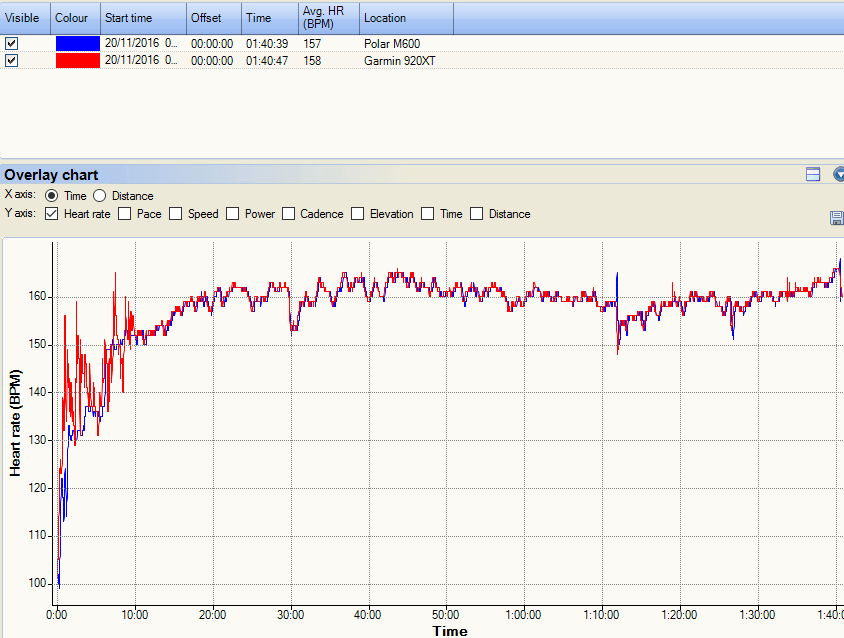
Easy Run
There was some variation with the Easy run but this is a good performance for the M600. The red spike at the start is from the STRYD and the STRYD is wrong. More details in <this> post.

Anaerobic 1 Minute Intervals
I changed over to a HRM-TRI for some intervals. Here I went up into the 170s but also tracked different kinds of recovery (jog/stand/walk) to see how the rapidly falling HR is handled. Although this was a >95% effort my HR didn’t have that much time to stay at high levels. This often causes a oHRM problems. The M600 did well. Very well. More details in <this> post.

VO2max 1km Intervals
The following test is from 3x 1km intervals at 90-95% effort with the interval followed by walking recovery, jog recovery and finally standing recovery. Here levels of over 165bpm are sustained correctly for several minutes. The STRYD HRM is back but this time with a new battery :-). The M600 looks good to me.
For me the only other meaningful type of test I could do in my HR range would be a 5k race where my HR could perhaps go up to about 180. That would test even higher, sustained HR levels. Maybe I will add that charts if or when I decide to do a 5k, I have been known to do the occasional one 😉 Of course repeating the tests again and again and again will further validate the results but I only have so much time as well as a day job.
Indoor Cycling HR Performance With sub-VO2max Intervals
Optical HR when cycling, to me, always seems less accurate. This appears counter-intuitive as most people would have lower and supposedly easier-to-measure levels of HR with a relatively stationary wrist. The variation in accuracy whilst cycling could generally be due to a cooling affect from wind speed or, more likely, as a result of changes to wrist positions as the rider’s position changes, both of those factors might affect blood flow.
This chart is not unusual. You can see the M600 loses the signal 3 times. Thinking about it, I suppose this is going to happen from time-to-time whichever wrist-based optical HR device you use. One good thing with the M600 is that it appears to correct itself quite quickly on each of the 3 occasions where it loses the signal. oHRMs do NOT always react so quickly. I specifically made numerous attempts to change riding position in this test and they all seemed to be handled well except the one at 30 minutes.
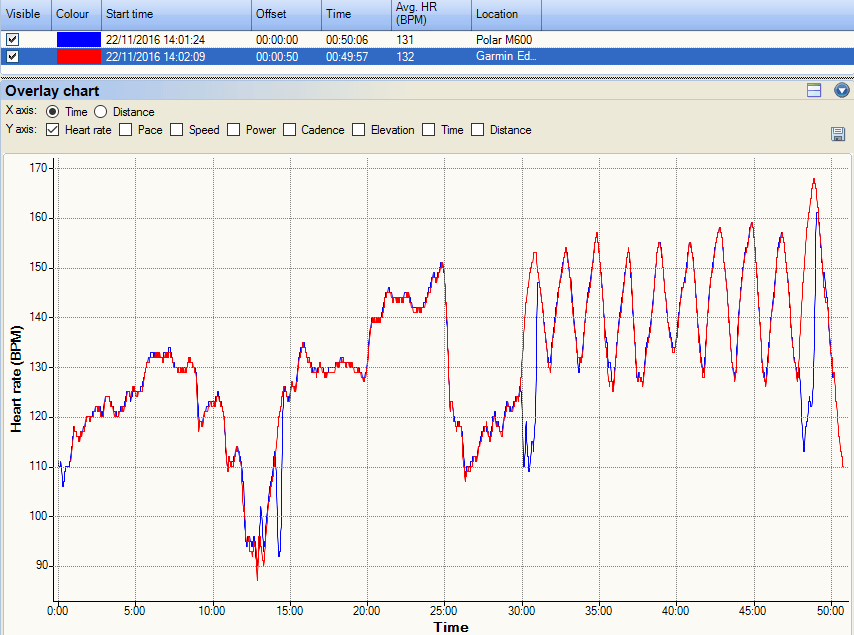
 Swimming HR performance
Swimming HR performance
The first swim test’s results were not great for the M600 and are discussed in more detail <here>, please ignore differences in the 5 minutes at the start and at the end after 30 minutes.
Clearly there is a notable mismatch in the curves. Maybe some water affected the reading? Maybe my freestyle technique was to blame?
One thing to note is that the Polar specifically SUPPORTS oHR whilst swimming with the M600. Most other devices disable oHR in the swim sport profiles. Hopefully this is something Polar can work on.

A few other swims later and results more akin to the following image was typical. So I would classify them as ‘usable’ and generally Ok. There are still often strange lags, possibly by the Garmin, but I guess that doesn’t matter so much when swimming and you can’t actually see the reading in any case! The particular example that follows has some alternating fast/slow lengths at the end. It didn’t seem to do too bad there for an oHRM.
Then the following swim has things going swimmingly well. Up to about 35 minutes it looks as near to perfect as it needs to be. But then? Actually I think the M600 may have paused itself as I did have to cancel something that flashed up at one end. That might account for the minute or so discrepancy.
Summary: When swimming it can sometimes be “a bit rubbish” (that’s a technical phrase). But generally it seems to be Ok-to-quite-good. There is perhaps something going on with inadvertent pausing of recording.
Outdoor Cycling HR Performance
Optical HR struggles with cycling! The following chart shows both the Garmin 235 oHR and Polar M600 oHR having a torrid time. The Garmin Edge in GREEN is correct. This is on a road bike and I’ve no idea what is going on. But here are the results, warts and all.
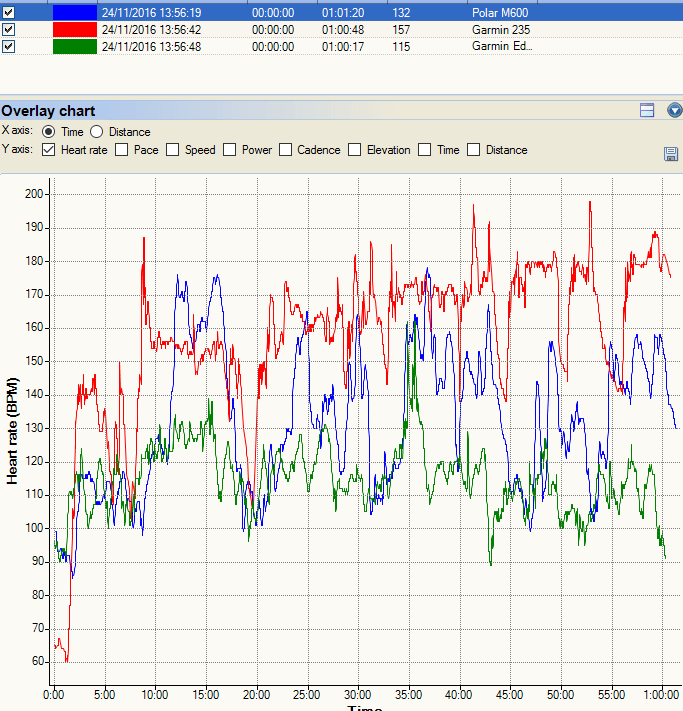
to finish off the accuracy tests in the Polar M600 review I also had a little jaunt on my MTB over a flat but, at times, a little bumpy route. A much better performance this time. Maybe the M600 just didn’t like being around 2 Garmins! (It’s possible! one lot of optical signal could have interfered with the other device).
Summary HR Accuracy: Clearly I found the accuracy “very good” for running and sometimes good for swimming and for cycling. A word of caution though, you could find different results for a variety of factors to do with either the sport OR your physiology. Even if you had bought a different oHR device you probably would have had some problems with it as we saw with the Garmin 235 🙁
Hardware – GPS accuracy
Much of my initial use of the M600 was whilst ‘running’. Generally ‘running in relatively open spaces’. Anecdotally it looked good.
However in my standardised GPS test of over 16km in varied GPS-reception conditions the M600 didn’t do too well at all. It was fine on the easy bits but struggled on medium-difficulty and hard-difficulty sections.
The GPS test route is described in more detail along with the test methodology <here>. All FIT/TCX files are available <here> in a public folder along with an analysis spreadsheet of the results for those who wish to delve further.
Example: The image below shows the worst-performing part of the test for the M600. This is NOT representative of the rest of the test where it performed better. To be fair to the M600, this is the hardest part of the test and includes a 100m tunnel on ‘Horse Fair’ to the right, where there is obviously no GPS reception. But you see that the M600 (red) has difficulty before the tunnel once it get close to the high buildings and it takes a while to recover after exiting the tunnel, going into the water. As a comparison, the track in blue is the best performing device so far (MIO Cyclo, Nov 2016). But you can then see that the M600 performed a little bit better, on the left hand side of the image after the roundabout, correctly staying on the pavement to the right.

I’d say that if you want a GPS sports watch, ie the M600, then the GPS reception WILL BE FINE for most uses. But if you expect to frequently encounter challenging situations such as high building and tree cover then you may be disappointed with the performance of the M600.
Hardware – Specs, battery, resolution, charging
The Polar M600 is water-resistant and suitable for swimming down to 10 meters (IPX8). I wouldn’t dive in it. I would, will and have swum with it in a pool. Cold lake in November? – no thank you!
Screen resolution is OK-to-good at 240x240px and looks much better than you’d expect when compared to: Suunto Spartan Sport – 320x300px, Fenix 3 – 218x218px; Garmin 235 – 215x180px, Apple Watch 2, 38mm – 272x340px; and Apple Watch 2, 42mm – 312x390px, Garmin Chronos 218x218px – same as The Fenix 5 perhaps?
The GPS signal is picked up fairly quickly. Certainly quickly enough; but not as fast as some of the better performing devices. It takes 5 or 10 seconds and you need to wait for that to happen as well as wait for it to properly acquire your pulse before starting out on your workout. As far as I understand it, there is assisted-GPS (pre-cached GPS) and GLONASS. The only configuration option for GPS is ‘off’ or ‘best’.
The GPS, oHR and screen together will be battery-hungry, yet the stated GPS running time is 8 hours (some sources say 10 hours). I’m not so convinced about the 10 hours and you should factor in a decent amount of battery consumption in non-sports usage before you get to start your run/workout. Still, 10 hours of GPS time is in ‘sensible territory’ for the target market and for some more demanding enthusiasts.
One thing I would say here in this Polar M600 review is that the wrist-twisting gesture, even whilst running, does a good job of turning the screen on just as you need it or, put another way, the screen is off quite a lot until you look at it.
Note: When partnered with iOS, general battery life is worsened. Although in-sport time is said to be the same on each platform (makes sense).
I’ve not particularly tested the charging speed. It seems broadly Ok, probably acquiring a full charge from full depletion within an hour. You can see the charger from the image below. It is held in place magnetically. It’s a bit of a faff to get in exactly the right position and sometimes unintentionally comes off. But it’s fine. The USB charging cable is precisely that; it is ONLY for charging and THERE IS NOT DATA TRANSFER via USB. Data transfer is 100% wireless.
Bluetooth and WIFI are both enabled by default. The WIFI setup is very clever as all the network settings/passwords are pulled from your android phone and require no configuration whatsoever. They just work. Exactly WHEN they work is another matter. In theory the M600 uses WIFI when it can to avoid a power-hungry interrogation of your smartphone. Yet I found some notable delays in uploading finished workouts to Polar FLOW unless the Polar FLOW app on the smartphone was specifically started.

AndroidWear-Supported Apps – sports and otherwise
Let’s take a different tack now. A brief detour.
If you buy the M600 then there is absolutely no reason to use the Polar app on it for sports per se. Other than that the Polar app is a good little app!! You can quite easily use other apps such as GhostRunner, Endomondo, Sports Tracker, Strava, Runtastic PRO or several others.
Once installed on your smartphone, the app ‘just appears’ on the M600 IF an AndroidWear version exists. Cool.
One limitation with the Polar AndroidWear app is that it is very much focussed on TODAY. For looking at your historical stats you may well use the Polar Flow app on your smartphone or on the web service. This makes 100% sense as the M600’s display is too small to have a good go at some of the more complex trend graphs. There is also some integration with historic data on Google FIT, which can be disabled.
When I first started playing with the M600 the ‘OK google’ thing came up. I was suitably annoyed and immediately vowed to test it out. I said ‘OK Google, map Kingston’ and was pleasantly surprised that it pulled up Google maps and then provided me with turn-by-turn directions from where I was to Kingston and with a map on the M600 (and on the smartphone too). Despite my dislike of talking to computers I was quite impressed!! I’ve yet to test how much of that route map would be cached on the M600 ie to see if it could independently direct me somewhere without a smartphone and mobile data. The screen is SMALL for navigation and I would suggest of limited use if you are moving quickly (run/bike/drive), however the audio prompts could make that work for me in the real world. Remember it is a REAL MAP on the M600 and not a simple directional line as with many/most other sport watches.
AndroidWear Music – The Polar M600 Review
The M600 can store and play music through a paired Bluetooth headphone without the need for a smartphone. I tried the first JABRA headphones I laid my hands on and they were fine. Generally the headphones are pairing with AndroidWear rather than the app so the pairing success rate should be higher 🙂 Bluetooth is a bit flaky though. With my sample size of ‘1’, I had no problems. I don’t run with music as a rule so don’t hold me to that!
You could use the inbuilt ‘Play Music’ app. Music is automatically synchronised to your M600 and you can choose whether to play it off the M600 or control it on the smartphone.

AndroidWear 2.0 – It’s Complicated
 AndroidWear 2.0 (AW2.0) is not yet released but is in the advanced stages of developer releases. It may or may not be supported by the M600. Although my take is that it will be supported once Google finalise the new OS, hopefully in early 2017.
AndroidWear 2.0 (AW2.0) is not yet released but is in the advanced stages of developer releases. It may or may not be supported by the M600. Although my take is that it will be supported once Google finalise the new OS, hopefully in early 2017.
So I include a few notes on AW2.0 so that you can hope more goodies will come for your M600 in 2017.
One complication with AndroidWear 2.0 is that some of its components will be called “Complications”. That certainly makes it complicated to describe 😉 These are widget-like bits of functionality such as the steps, sport and mail icons on the watch face to the right. My understanding is that a developer could create all such functionality themselves on their proprietary watch face OR bundle-in some pre-built ‘complications’ to the basic analog watch face that they develop.
It’s that sort of thing that AndroidWear 2.0 seems to be offering ie a bit more freedom for developers to improve the user interface/experience and add a pretty watch face or two. I’m not sure a Polar FLOW app on Android Wear 2.0 will be much different to where it is now in this respect.
AndroidWear 2.0 will also offer apps the ability to share data with each other via the Google FIT platform/app. That’s quite interesting for me for a long-term perspective on where data storage is going but what you, the user, will see as a benefit is less clear. Bear in mind that Polar FLOW and Google FIT ARE ALREADY integrated to some degree. Perhaps the main benefit here would be that you can use one app for running and another for sleep tracking and another for activity tracking. That all sounds great but if that entire, global multi-app ecosystem is working fine by the end of 2017 I will be pleasantly surprised! It will be a mammoth task for all the key vendors to work around this both technically and also politically ie do manufacturers want to give their/your data to Google? (HINT: Eventually it will happen. Eventually all your data will be on Google FIT/Apple Health. Eventually.)
One of the other directions for AndroidWear 2.0 is to move AWAY from the requirement of tethering to a smartphone. The Polar M600 already does this to quite a degree with AW1.0. (The Apple Watch currently requires the iPhone – I would imagine that is annoying to say the least.)
Summary: I always love to have the latest version of whatever it is. Polar Flow AS IT IS NOW is GREAT. no need to wait for AndroidWear 2.0…I suspect initially Polar FLOW will be materially the same on AW2.0.
iOS and the Polar M600 -Review Section
The following table shows Polar’s view of the differences between using the M600 with Android and iOS. I’ve not tried the M600 with iOS at all. I might in the future.
Part of the appeal to me of the M600 is the great integration it has with an Android smartphone. That integration is reduced when using iOS and I haven’t tested it on IOS.
The Polar sport app will still be broadly the same on iOS but you will be paying a premium price to buy the M600 and then using the integration functionality on a functionally poorer app on iOS.
Alternatives – Polar M600 Review
A comparable alternative is the Apple Watch Nike+ Edition.Other broadly similar alternatives are the Fitbit Ionic (review), Fitbit Ionic adidas (2018), Garmin Vivoactive 3 (review) or Samsung’s Gear Sport.
These are comparable in the type of offering it is ie they are able to support 3rd party apps on a 3rd party watch-based OS and they have some degree of intended sportyness. I wouldn’t say that Garmin’s improving Connect IQ is yet in the same league.

A similarly priced sport-only alternative to the M600 would be a Garmin Forerunner 630, which would offer more advanced running functionality but no oHR and much less Android-Wear-like functionality. A Garmin 645 (optical and more expensive) may be released in 2017.

Perhaps a more appropriate comparison would be to the cheaper Garmin Forerunner 235 (review) or TomTom Runner 3 (review)?

The Garmin 235 and TomTom Runner 3 are clearly different beasts to each other AND to the M600. Both are similar in that they have decent oHR. The TomTom has inbuilt music and a bit of navigation, yet it is essentially a running watch, albeit with some limitations on the running feature set and absolutely no supported app ecosystem. The 235 will be replaced in 2017 and is the best running watch of these 3 yet it simply does not offer much of the extra bits like music or deep integration with a smartphone. Some of the M600’s non-Polar app functionality MAY POSSIBLY exist in Garmin’s CIQ app ecosystem – it would depend on what specific functionality you want.
This Polar M600 review shows Polar’s latest offering to be EVEN BETTER than I thought it was going to be and it can certainly hold its own against all its potential rivals I have listed here – at least it can for sports usage
Personally, I could quite easily use the M600 as a running watch and a 24×7 tracker. It would also have a good go at other sports but as we’ve seen the GPS and HR can be limited from time-to-time and so I would probably pair it with a Bluetooth chest strap for a full HR track.
 In many respects, it’s a great and competent sports/fitness-cum-running watch AND in other respects, it is a GREAT little toy (said as a compliment) and I really liked playing with the apps/integration VERY MUCH more than I anticipated. The integration with the Android smartphone was impressively seamless. Inbuilt music will appeal to many as will the Google maps integration.
In many respects, it’s a great and competent sports/fitness-cum-running watch AND in other respects, it is a GREAT little toy (said as a compliment) and I really liked playing with the apps/integration VERY MUCH more than I anticipated. The integration with the Android smartphone was impressively seamless. Inbuilt music will appeal to many as will the Google maps integration.
Indeed the scope of functionality with the very many supported 3rd party apps is WAY BEYOND what I have covered in this review…camera integration, lap counting for swimming, navigation, other ecosystem integration, etc..
Features/Specs:
- 45 x 36 x 13mm, 63g
- Waterproof for swimming IPX8, 10m
- Does work with iOS 8.2 on iPhone 5
- Built-in GPS (14-day A-GPS) and GLONASS
- Built-in proprietary 6-LED optical HR sensor. That is claimed to be ‘accurate’.
- Links/Apps to execute/display training features already in Polar Flow eg smart coaching and activity guide.
- 1.3″ colour touch display
- 240 x 240 pixels, 260ppi transmissive TFT display, Corning® Gorilla® Glass 3
- 247 activity tracking (not 247 HR, I understand, just single measurements and sports measurement)
- Activity tracker
- One single navigational button underneath the screen
- >2 day battery life as a connected android device (GPS off). 500mAh
- 2 days / 8 hours of training (with Android phone), 1 day / 8 hours of training (with iPhone)
- 4Gb of internal storage (eg music playback does not require a smartphone), 512Mb RAM
- Vibration alert, backlight and alarm
- Running cadence from the wrist
- Custom pool length
- Recovery Status, Training Load and Running Index
- Inactivity alert, sleep duration/quality, activity benefit.
- External sensor support is in Polar’s specs to support Bluetooth HR strap AND speed/cadence sensor (the speed/cadence sensor may be a type). The internal accelerometer could permit treadmill usage.
- Internal sensors supported are: Accelerometer, Ambient Light Sensor, Gyroscope, Vibration motor, Microphone
- Data exchange is via Bluetooth 4.2 and WiFi and the Polar APP.
- Processor MediaTek MT2601, Dual-Core 1.2GHz processor based on ARM Cortex-A7.
Specification may change over time (link to polar.com)
The following are included because of the support of AndroidWear
- Multiple simultaneous apps: google maps, music playback, your polar app and there LOTS of other Android apps to choose from. Imagine using maps/music and Polar together, a simple example that replicates some APP functionality without Polar having to do all the work on their hardware. Cool….
- Android voice control
- Custom watch faces
- Calendar notification (this integrates with training functionality announced recently on Flow)
- Text/Read/Reply/Call Handling
- Sync music through Google Play
- Note it is possible to have limited functional pairing of an Android Wear device with iOS8.2 and above and with iPhone 5 and above. NOT with iPAD. With Android Wear v2.0 (2017) the iOS functionality could be expanded.
Issues Found In This Polar M600 Review
Perhaps the quiet vibrations and lack of a speaker will be issues for you. Not for me.
If you are an iOS user then you will have a limited experience but that WILL be dramatically improved in Q1/Q2.2017 with AndroidWear 2.0.

Summary:
It’s really good.
This is Best Running Watch for AndroidWear. As well as being a serious ‘sports tool’, the M600 is a competent and pretty device.
Even looking at 2017’s crop of upcoming AndroidWear 2.0 sports devices I just can’t see any of them touching the M600. Perhaps the Huawei might get close.
You can see from some of the comments after this review that Polar is clearly maintaining and improving the M600.
Yes, the vibration alerts might be a little on the weak side but Polar was quick to address the manual LAP requirement.
The touchscreen is responsive and better than many sports touchscreens, although perhaps it is a little too sensitive sometimes when swimming.
Overall: Impressed.


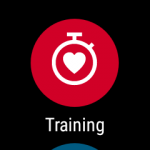
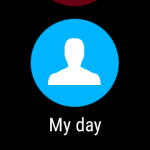


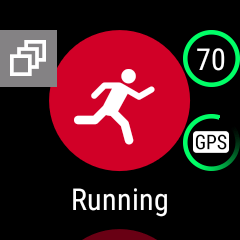
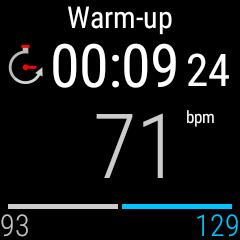
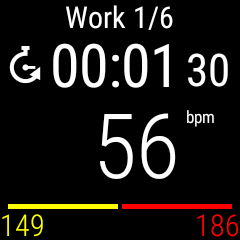

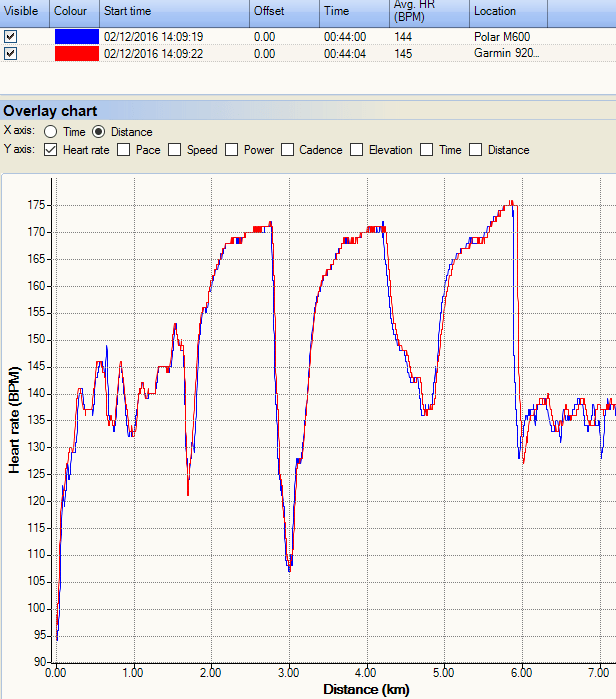

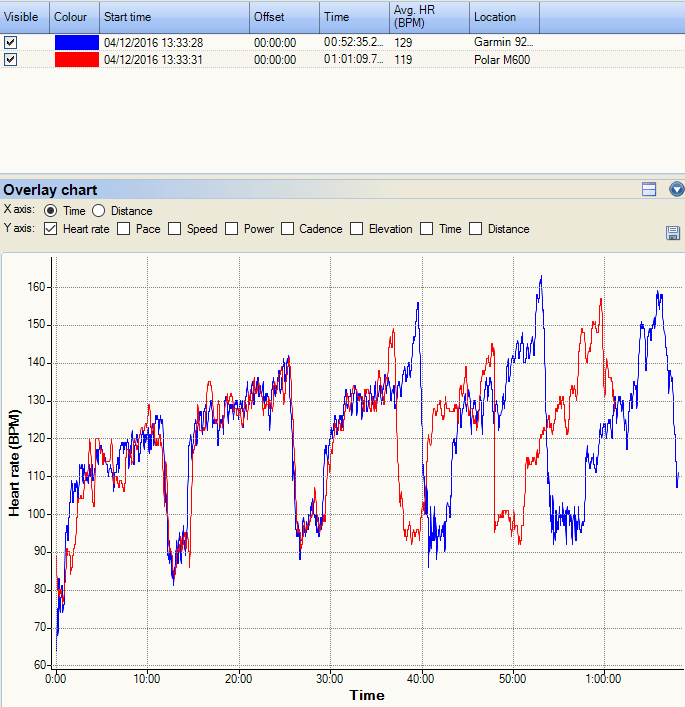


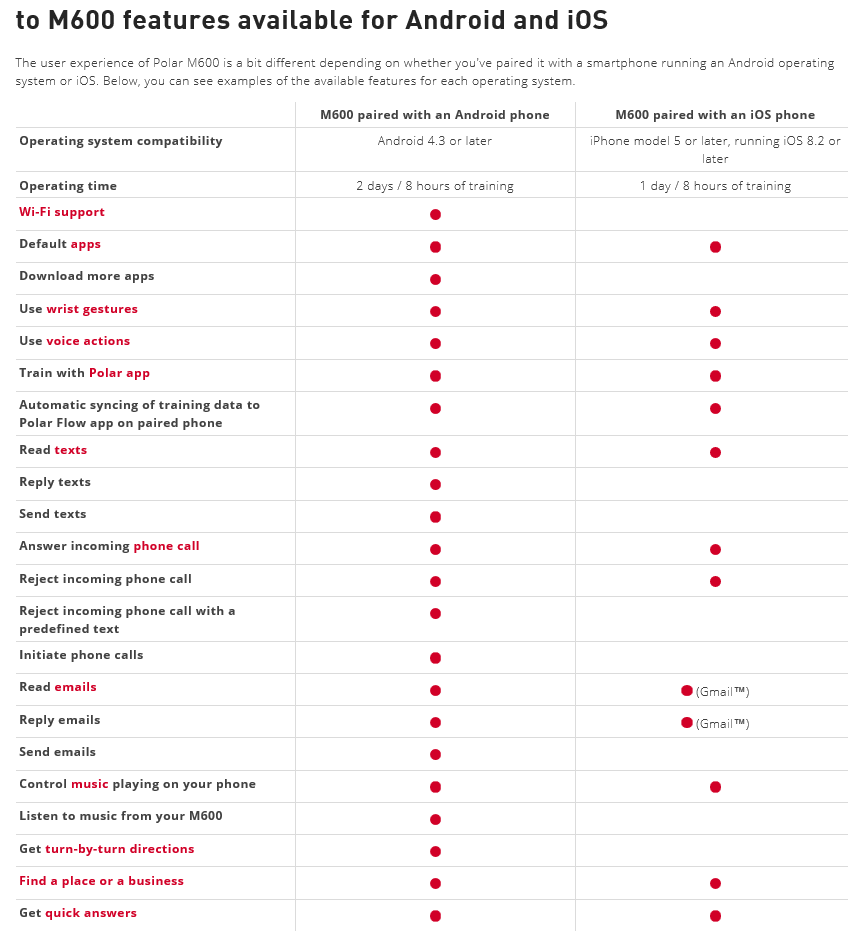

Good review.
What were your thoughts on the vibration alerts? I’ve tried two Polar M600s and they both are really weak — so much so that I can hardly feel it. Did you have this problem?
Also, your review says the is on GLONASS for GPS, but the specs say it’s included. Do you know whether it’s included or not? And where did you find the GPS configuration setting for “best”?
I generally like the device and am pleased with the on-board music, but the weak vibration alerts is a concern.
I’ll double check the GLONASS (Edit: yes, GLONASS). GPS is effectively on or off but in polar flow it called ‘on’ ‘best’. vibration I thought was a bit weak but could have been worse, there are settings to change it on flow – that was one thing I was going to look at as not sure thy made any difference. did you use on ios or android?
Android
Quite interesting. I won’t trade my Fenix 3HR for this but will have a hard look at version 2
Can you run/train with the M600 and leave the phone at home? Would that extend battery life?
What about ‘weak’ vibration alert on M600? A lot of users complains about that at official Polar forum. How did you find that feature. Is it realy so bad and unrecognizable? Thnx.
there are 4 SOUNDS settings in flow. i think I was getting confused on that. yes vibration is just on/off.
Great review, made me re-think my decision to return the watch a few weeks ago! I found the Android Wear music integration really irritating; namely, lack of drag and drop. I don’t store music on my already cramped 32gb phone as I use Spotify, so having to go through Google Music via phone then watch, I found an utter pain. I’m sure Wear 2.0 will sort this out…eventually. I also found the microphone, bluetooth and touchscreen to be bit flaky. But interesting product, looking forward to the V900 or whatever.
ty for the comments. interesting. I take most of your points. regarding the Bluetooth though I was going to wax lyrical about it (decided not to) but I’ve had zero probs with it on my Huawei p8…not exactly a standard model. best Bluetooth pairing I’ve had with any provider. maybe fitbit were close/same.?? or maybe I was lucky 🙂 I even got the good Spartan..so I must be (lucky).
There is an android wear music app you can use instead of Google Music to add music to the watch. It doesn’t read wma files though.
Polar has updated this device to include more things missing, including altitude, manual laps and cadence. So it’s definitely improving.
I had problems with a cheap Bluetooth headset but no problems when paired with an old Motorola S9HD Bluetooth headset